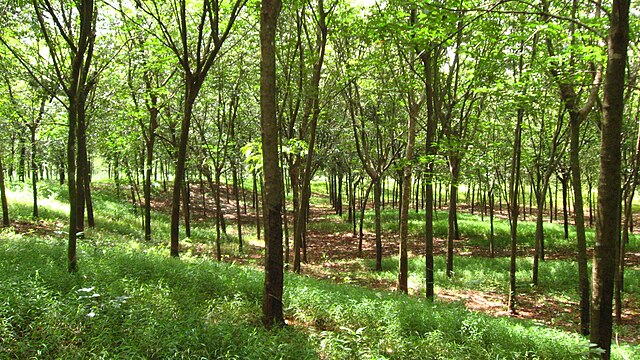With a 60% growth in half-year exports for 2024, the Cambodia agriculture sector has helped boost the country’s GDP.
Government experts now predict that the growth of the national economy in 2024 will stabilize at 6%. Then it will spike to 6.3% between 2025 and 2027, as production, industry and trade expand.
Driving this expansion are four sectors, namely manufacturing, tourism, service industry and agriculture.
With regard to farming, the growth in Quarters 1 and 2, 2024, was the highest in half a decade. This is according to a statement by Cambodia’s Prime Minister Hun Manet on July 20, 2024.
The Ministry of Agriculture, Forestry, and Fisheries cited that 2024’s half-year agricultural export volume to 77 countries reached 6 million tonnes.
As a show of thriving neighborly trade, China, Thailand and Vietnam collectively accounted for 94% of Cambodia’s farming shipments.
Food and Cash Crops’ Exports Boost
Besides bilateral trade prominence, there were also key crops that buoyed the export value. These included cassava, cashew nuts, rubber and rice, whose individual half-year results went beyond those of the 2023 performer, banana.
None of the produce posted better returns than cashew nuts, whose $800,000 returns represented the bulk of Cambodia’s agricultural earnings worth $1.8 billion. Between January and June 2024, the key recipient of cashew nuts was Vietnam.
Coming second was cassava, whose volume totaled 2.5 million metric tonnes worth $450,000, to mainly China, Vietnam and Thailand. The root crop marked the biggest half-year growth of all agricultural produce in the country.
Third in export value was rice, which generated some $400,000, with the main recipient being China. Milled rice led the export momentum at 338,654 tonnes worth $247.6 million, according to a July 9, 2024 report on Bernama.
Plantation crops also contributed greatly to the half-year results, with rubber generating $213.4 million, a yearly increase of 8.6%. A Directorate of Rubber’s report of July 19, 2024 showed that the country exported 140,653 tonnes of rubber from 407,172 hectares.
Ultimately, gains in the Cambodia agriculture industry, together with growing demand in import markets mark the start of a vigorous GDP growth. As the following statistics show, the government of Cambodia is right to be bullish about growth as agriculture supports the economy.
Cambodia Agriculture Statistics
Cambodia is one of Asia’s countries with a healthy agricultural sector despite having a thriving textile and manufacturing sector. Cambodia’s top agricultural produce are cassava and paddy or milled rice. In 2022, the country ranked 60th in global agricultural exports at 635,757 tonnes. In comparison, the top agricultural exporting nations in 2022 were from outside Asia, namely the United States and Brazil.
What drives Cambodia’s GDP (including non-agricultural goods)?
Textile and farm crops are some of the top drivers of Cambodia’s economy. According to OEC, Cambodia was 103rd among world economies in 2022 in terms of GDP and 69th in exports worth $35.98 billion. The export of 2022 was women’s knitwear worth $2.07 billion while non-knit women’s wear at $1.86 billion and cassava at $1.3 billion came second and third.
How big is the cassava industry in Cambodia?
The yearly production of cassava in Cambodia hovers between 10 and 14 million tonnes, with 2019 at 13 million tonnes. As such, cassava production the country has newly made the country a rising ‘tiger’ economy. In 2019, the United Nations Development Program (UNDP) placed Cambodia at number 10 worldwide and 4th in Asia in cassava production. UNDP estimated that in ten years (starting 2019), earnings from cassava would add $940 million to Cambodia’s GDP while yearly growth would be cumulative. This is due to a return-on-investment of 3-to-1, which means every 1 cassava brings 3 times cash returns.
